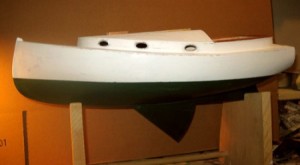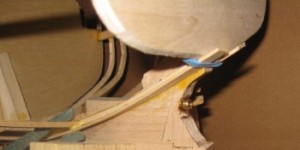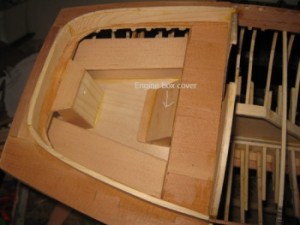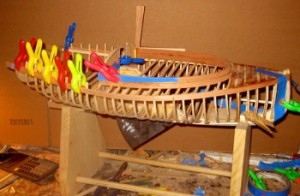I first became interested in boats, sailing vessels in particular, when I saw my first ship models. They were in display cases in the Cabrillo Beach museum in San Pedro, Ca. I was awed by the web of rigging on the square-riggers. I sensed that, complicated as it looked, every line had it’s own special job to do. Those splendid replicas, so carefully crafted, spurred my imagination. It immediately galloped off to sea and never came back.
The first and one of the finest memories I have of my late father is the plastic model of an aircraft carrier that we assembled together. With my child’s impatience it seemed like I had spent a smallish eternity painting tiny fighter jets. I became one of those model-making kids with the squadrons of aircraft hanging from the ceiling and the shelves lined with ships. I put together the large Revell model of Old Ironsides. It taught me the difference between halyards and sheets, what braces do and the names of all the spars and sails. Suddenly Horatio Hornblower books made sense. It was like I had learned a new language. Eventually I learned to craft my own models from scratch. That taught me the basics of the specialized structure of wooden vessels.
A good model is a great teacher. Recently I stumbled on to a thread on WoodenBoat magazine’s WoodenBoat Forum that has taught me a few new tricks, old dog that I am. It features an ongoing building sequence of Ted Brewers 14 foot catboat design. Donald Branscom is an experienced scale modeler as can be seen in his1/175 scale model of the USS Missouri. The rendering of correctly proportioned details is the crux of this craft. The true test is: can you blow the model up to life size and not have a handrail that is big around as a sewer pipe? You can bet that Donald gets it right. He is getting the Brewer catboat right in every detail.
He built the keel and stem directly on the construction drawings for the backbone. As the build progressed he made a centerboard trunk complete with metal centerboard plate. A transom and molds were set up on the backbone and sheer clamps appeared which received the tops of bent frames. Before long he had it planked up and a cabin was being constructed. There are even some interior furnishings taking shape. Branscom takes an interesting approach to making portholes. As of this writing the hull and cabin are being painted. It has taken five weeks to get to this point and that is way faster than I could manage.
The byplay between forum members is interesting and educational. WoodenBoat Forumites are known for being generous with their knowledge and experience. The discussion takes this thread into the realm of a very useful resource for both beginning and advanced model-makers. The photos are excellent and the descriptions are clearly stated.
As much as I enjoy museum quality models of the world’s great sailing ships I have come to prefer three dimensional depictions of smaller vessels. They are the sort of vessels I have known and loved not in the abstract but in real life. A nicely done model of a catboat wakens the memory of the adamant pull of the weather helm. I can once again appreciate the simplicity of having just one sheet to tend while tacking down the Rhode River to the open waters of the Chesapeake Bay.
Small ships that look like big ships are not toys. They are extensions of the sailor’s passion for the world of wind and wave.  Taking the helm of a small boat is like becoming a piece of connective tissue stretched between forces in search of balance. Muscle memory is an important element of seamanship. Cerebral memories are what keep me going in the landbound seasons. On winter days a glance at a small ship moored to the mantle can kindle a memory that warms the soul.
Photos by Donald Branscom 2010







